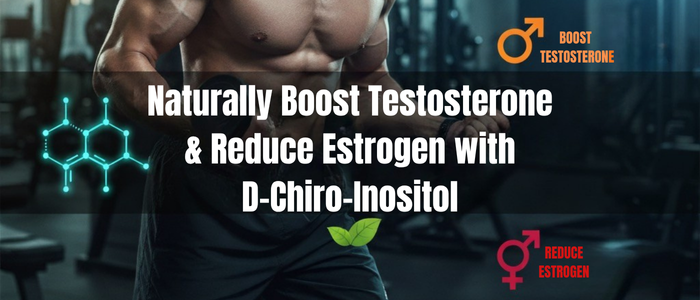


Keto Diet: Lower Protein Works Best
By Robert Schinetsky
Ketogenic diets have been popular for years now, especially among “bio-hackers”, longevity enthusiasts and weight loss circles.
And, while they may not be at peak popularity as they were a few years back, there’s no denying that for individuals that want to lose weight and get healthy, the keto diet is among the first nutrition plans considered for effective weight loss and body recomposition. Research has shown it to be as effective for weight loss as other forms of dieting and lead to greater energy expenditure.[17,18,19]
As you’re probably well aware, the ketogenic diet is a high-fat, extremely low carb diet whose primary purpose is to force the body to run on fat as opposed to glucose. In order for this to occur, you essentially have to deprive your body of carbohydrates, (50 grams or less daily), forcing it to burn off its glycogen stores and shift to burning fat and ketones.
One key facet that isn’t addressed often enough by keto advocates as well as those checking out the diet is protein.
Keto diets traditionally recommend a protein intake between 20-25% of daily calories.[1] However, many individuals as well as research trials use considerably lower protein intakes -- 20% of total daily calories.[2]
Consuming too much protein may slow or prevent the transition into ketosis. The reason for this is that certain amino acids present in protein (such as alanine or glutamine) are glucogenic amino acids, meaning they can be converted to glucose in the body via gluconeogenesis.
It should also be mentioned that there are ketogenic amino acids (such as leucine and lysine), and some amino acids can be either glucogenic or ketogenic (including tyrosine and phenylalanine).
Ketogenic amino acids can also feed the cycle that generates acetoacetate and Acetyl-CoA, which then produces ketones.
All of this is to say that you need to make sure you consume enough protein each day from high-quality sources such as:
- Fatty Fish
- Red meat
- Eggs
- Dairy
- Poultry
- Shellfish
One other source to help you achieve your daily protein needs are supplements, and we’ve created what we believe to be the best keto protein powder in ThermoHeat Protein.
What is ThermoHeat Protein?
AML ThermoHeat Protein is an advanced, scientifically-formulated protein and amino acid supplement created to enhance fat burning, reduce appetite, and support lean muscle mass.
Each serving of ThermoHeat Protein contains research-backed ingredients that promote thermogenesis, stimulate metabolism, and protect skeletal muscle from the catabolic effects of low-calorie, low-carbohydrate diets.
AML ThermoHeat Protein contains no artificial sweeteners and is ideal for individuals who are on low carb, low calorie, and/or ketogenic diets.

What’s in ThermoHeat Protein?
Whey Protein Isolate + Added Leucine
When it comes to the best protein sources, few, if any, can match whey protein. It contains all the essential amino acids to support muscle building and recovery from exercise. It’s high in leucine, and it offers high biological value (rivaled only by eggs -- considered by many to be the “ideal” human protein).
ThermoHeat Protein supplies 6.25 grams of whey protein isolate in every serving.
Why Lower Protein in ThermoHeat Fat Burning Protein?
Naturally, you’re wondering why such a specific amount of whey protein, and why is it so much less than the typical 24-25 grams of whey protein that you’re accustomed to seeing in protein powders.
Well, research has shown that consuming 6.25g of whey protein alongside a high dose of leucine (5g to be exact) can stimulate protein synthesis equivalent to consuming 25 grams of whey protein![3]
It just so happens that AML ThermoHeat Protein also includes a full 5 grams of leucine in every serving.
Additionally, the benefit of lower protein (6.25 grams) combined with 5 grams of leucine (provides an equivalent boost in protein synthesis as 25 grams of protein). This allows your body to take in lower amounts of protein important for enhancing protein synthesis and at the same time keep your body in a constant optimum state of ketosis.
Furthermore, as we mentioned above, leucine is a ketogenic amino acid, and its breakdown fuels the formation of ketones, including BHB.[4]
Leucine also serves as an “anabolic trigger” of muscle protein synthesis, which fuels muscle recovery and growth.
Including both whey protein and L-Leucine provide support for individuals looking to build and maintain lean muscle mass, while not providing so much that it temporarily kicks them out of ketosis.
Something else you might find appealing is that both leucine and dairy protein (e.g. whey protein) encourage secretion of glucagon-like peptide-1 -- a hormone in the body that affects satiety.
Medium-Chain Triglycerides (MCT)
Medium chain triglycerides (MCTs) are a special type of fat that provide a more efficient source of “fatty fuel” for muscles than other types of fats (such as long-chain fatty acids) due to the fact that they do not require a carnitine “taxi” to shuttle them into the mitochondria for β-oxidation.[6]
Additionally, MCTs also stimulate the body’s to generate ketones as well as increase concentrations of leptin and peptide YY -- two hormones that promote feelings of fullness.[7,8]
Recent research also indicates that consuming two grams (2g) of MCT can increase fat burning during physical activity.[9] And, previous research suggests that similar doses of MCTs increase postprandial thermogenesis and reduce body weight and body fat.[10,11]

ThermoHeat Protein supplies 3,000mg of MCTs per serving.
Thermogenesis & BAT Activation
With “ThermoHeat” in the name, you know that there’s bound to be ingredients that stimulate thermogenesis and support the body’s ability to burn fat for fuel.
At the forefront is the industry-leading grains of paradise extract -- Paradoxine.
Paradoxine is standardized for 6-paradol (the pungent alkaloid that gives the spice its distinct aroma and bite), and research has shown that supplementation with Paradoxine may increase energy expenditure, reduce visceral fat and enhance weight loss.[12,13]
Thermo Heat Fat Burning Protein also includes a pair of prominent nitric oxide support agents in L-Citrulline + grape skin extract.
Why include nitric oxide boosters in a keto protein powder?
Well, nitric oxide has been shown to enhance brown adipose tissue (BAT) activity and thermogenesis. More specifically, animal models demonstrate that nitric oxide inhibits proliferation and enhances the expression of two key adipogenic marker genes in peroxisome proliferator-activated receptor (PPAR) and uncoupling protein-1 (UCP-1).[14,15]
It’s also worth mentioning that ThermoHeat Protein also includes BioPerine, which enhances nutrient absorption as well as supports increased energy expenditure and reduced appetite due to piperine (the active compound in black pepper extract) which activates the TRPV1 receptor.
Vitamin D3 + Electrolytes
Finally, ThermoHeat Protein supplies 1000IU of Vitamin D3 (the “sunshine vitamin”) along with essential minerals and electrolytes, including potassium and magnesium.
The reason for including these additional micronutrients is that Vitamin D3 and magnesium is two of the most common nutrient deficiencies around the world, and low-carb dieters routinely suffer from feelings of low energy, brain fog, and cramping, which can be attributed (at least in part) to loss of electrolytes and hydration.
ThermoHeat Protein includes the citrate forms of potassium and magnesium which can serve as acid buffers (alkalinizers) when following low-carb and ketogenic diets. Furthermore, citrate salts are also known to be beneficial for kidney health & function.[16] This is important because following low-carb or ketogenic diets are more prone to kidney stones.
Takeaway
Consuming enough protein is essential no matter what diet you’re following. However, low carb dieters, particularly keto dieters, are at risk for under consuming protein for fear that consuming too much may delay or prevent their transition to a state of ketosis.
ThermoHeat Protein was formulated to be the best keto protein powder on the market by including efficacious amounts of protein and amino acids to support the muscle recovery and growth while also providing agents that stimulate thermogenesis, increase energy expenditure, and support body recomposition.
©Published by Advanced Research Media, Inc. 2022
©Reprinted with permission from Advanced Research Media, Inc.
References
- Masood W, Annamaraju P, Uppaluri KR. Ketogenic Diet. [Updated 2021 Nov 26]. In: StatPearls [Internet]. Treasure Island (FL): StatPearls Publishing; 2022 Jan-. Available from: https://www.ncbi.nlm.nih.gov/books/NBK499830/
- O’Neill, B., & Raggi, P. (2019). The ketogenic diet: Pros and cons. Atherosclerosis. doi:10.1016/j.atherosclerosis.2019.11.021
- Churchward-Venne TA, Burd NA, Mitchell CJ, et al. Supplementation of a suboptimal protein dose with leucine or essential amino acids: effects on myofibrillar protein synthesis at rest and following resistance exercise in men. J Physiol. 2012;590(11):2751-65.
- Bixel, M. G., & Hamprecht, B. (1995). Generation of Ketone Bodies from Leucine by Cultured Astroglial Cells, 2450–2461.
- Chen Q, Reimer RA. Dairy protein and leucine alter GLP-1 release and mRNA of genes involved in intestinal lipid metabolism in vitro. Nutrition. 2008;25(3):340-9.
- Issues, N., & Gastroenterology, I. N. (2017). The Use of Medium-Chain Triglycerides, (February).
- St-Onge MP, Mayrsohn B, O'Keeffe M, Kissileff HR, Choudhury AR, Laferrère B. Impact of medium and long chain triglycerides consumption on appetite and food intake in overweight men. Eur J Clin Nutr. 2014;68(10):1134-40.
- Cliff J. d C. Harvey, Grant M. Schofield, Micalla Williden, and Joseph A. McQuillan, “The Effect of Medium Chain Triglycerides on Time to Nutritional Ketosis and Symptoms of Keto-Induction in Healthy Adults: A Randomised Controlled Clinical Trial,” Journal of Nutrition and Metabolism, vol. 2018, Article ID 2630565, 9 pages, 2018. https://doi.org/10.1155/2018/2630565.
- Tsujino S, Nosaka N, Sadamitsu S, Kato K. Effect of Continuous Ingestion of 2 g of Medium-Chain Triglycerides on Substrate Metabolism during Low-Intensity Physical Activity. Nutrients. 2022;14(3):536. Published 2022 Jan 26. doi:10.3390/nu14030536
- Kasai M., Nosaka N., Maki H., Negishi S., Aoyama T., Nakamura M., Suzuki Y., Tsuji H., Uto H., Okazaki M., et al. Effect of dietary medium- and long-chain triacylglycerols (MLCT) on accumulation of body fat in healthy humans. Asia Pac. J. Clin. Nutr. 2003;12:151–160.
- Ogawa A., Nosaka N., Kasai M., Aoyama T., Okazaki M., Igarashi O., Kondo K. Dietary medium- and long-chain triacylglycerols accelerate diet-induced thermogenesis in humans. J. Oleo Sci. 2007;56:283– doi: 10.5650/jos.56.283.
- Sugita, J., Yoneshiro, T., et al; “Grains of paradise (Aframomum melegueta) extract activates brown adipose tissue and increases whole-body energy expenditure in men”; British Journal of Nutrition; (2013) 110(4), pp. 733–738; https://www.cambridge.org/core/journals/british-journal-of-nutrition/article/grains-of-paradise-aframomum-melegueta-extract-activates-brown-adipose-tissue-and-increases-whole-body-energy-expenditure-in-men/517F8F0D73864C919E42D502537BA01D/core-reader
- Sugita J, Yoneshiro T, et al; “Daily ingestion of grains of paradise (Aframomum melegueta) extract increases whole-body energy expenditure and decreases visceral fat in humans”; Journal of Nutritional Science and Vitaminology; 2014, 60(1): 22-27; https://wjstage.jst.go.jp/article/jnsv/60/1/60_22/_pdf
- Nisoli, E., & Carruba, M. O. (2006). Nitric oxide and mitochondrial biogenesis. Journal of Cell Science, 119(14), 2855 LP-2862. https://doi.org/10.1242/jcs.03062
- Engeli, S., Janke, J., Gorzelniak, K., Böhnke, J., Ghose, N., Lindschau, C., Sharma, A. M. (2004). Regulation of the nitric oxide system in human adipose tissue Increased eNOS, 45. https://doi.org/10.1194/jlr.M300322-JLR200
- Phillips R, Hanchanale VS, Myatt A, Somani B, Nabi G, Biyani CS. Citrate salts for preventing and treating calcium containing kidney stones in adults. Cochrane Database Syst Rev. 2015 Oct 6;(10):CD010057. doi: 10.1002/14651858.CD010057.pub2. PMID: 26439475.
- David S Ludwig, Stephanie L Dickinson, Beate Henschel, Cara B Ebbeling, David B Allison, Do Lower-Carbohydrate Diets Increase Total Energy Expenditure? An Updated and Reanalyzed Meta-Analysis of 29 Controlled-Feeding Studies, The Journal of Nutrition, Volume 151, Issue 3, March 2021, Pages 482–490, https://doi.org/10.1093/jn/nxaa350
- Dashti HM, Mathew TC, Hussein T, et al. Long-term effects of a ketogenic diet in obese patients. Exp Clin Cardiol. 2004;9(3):200-205.






